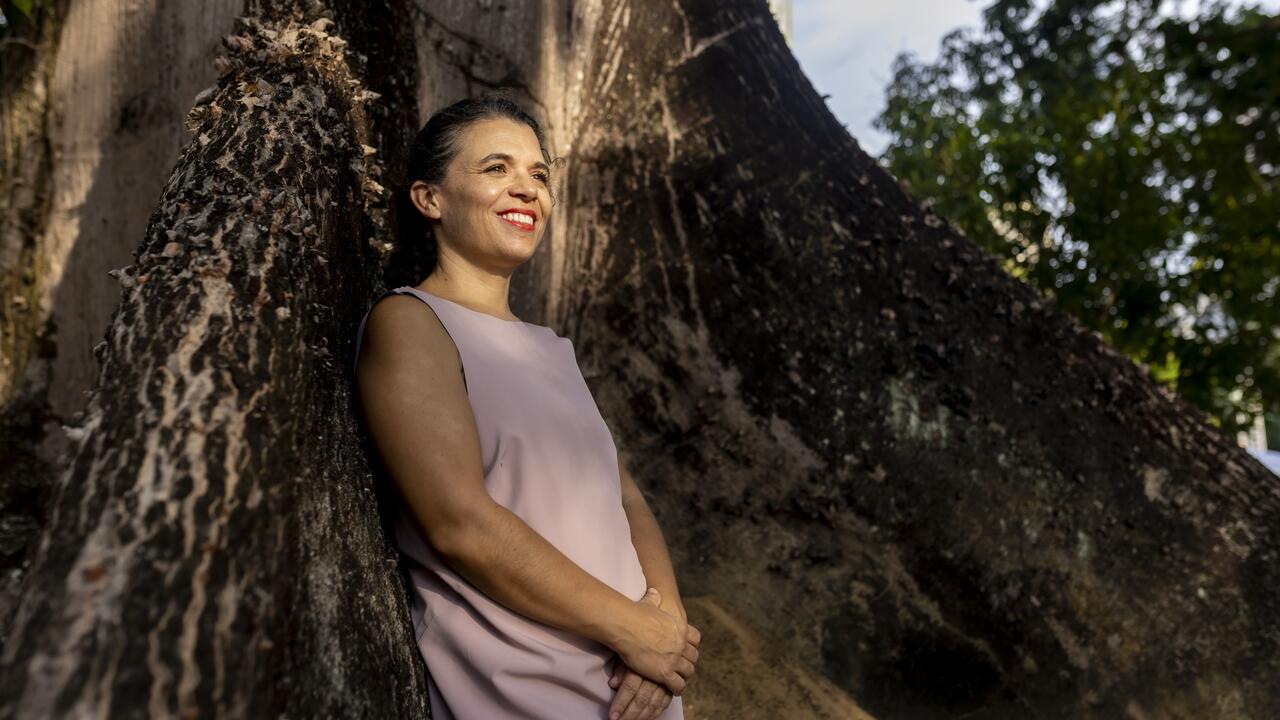Ciara Phillips
Galerie Gregor Staiger
Galerie Gregor Staiger

Ciara Phillips’s work is devoted to printing techniques, mainly screenprinting and textiles. In this show Start with a practical idea, one was immediately struck by her sparing but deliberate use of the gallery space. There were saturated greyscale screenprints of her own photographs as well as dyed fabrics printed with repetitive patterns or with free-standing geometrical elements. Two lengths of white fabric suspended from the ceiling in the middle of the space bore two patterns: one in black with a simple V-shape, the other multicoloured with diamond-like shapes all over (Very and Colourful, both 2012). The artist also used laths of course-grained wood to print triangular, rhomboid or, in the case of Make space with art (2012), honeycomb-shaped elements on fabric. By contrast, Untitled (2012) – smaller pieces of fabric dyed a bluish-green and printed with yellow and black elements – resembled strips of text.

Phillips hung these smaller pieces on a single wall together with a framed print of a black and white close-up photograph of a painter’s encrusted palette (To make use of, 2012), another banner with floor plans in pink (Focused activity, 2012) and a textile print of the same palette in purple (To make use of, 2012). With this display, the artist reconstructed a kind of mood board and pointed to her interest in the principle of creativity. All of the prints testified both to her mastery of a range of techniques and to their experimental use. Their form developed out of active practice, being neither predefined, planned or obviously designed. For Phillips, it makes as little sense to distinguish between art and craft on the basis of specific sets of tools as it does to draw a clear line between photography and screenprinting. In the exhibition, her cross-media works became signifiers whose content did not coincide precisely with the objects depicted, including a water bottle (As you want, 2012) and a toucan photographed at a nearby garden centre (Someone to talk to, 2012). Instead, these works acted as placeholders for stations in her production process, as examples of the application of a given technique. Subsequently, she installs them in a richly referential setting in which their Arts & Crafts origin can be reinterpreted and reconstructed in intellectual terms instead of being appreciated as simple handwork.
As she has often done before, Phillips developed many pieces for this show in the exhibition space itself, during a residency at the gallery. Rather than being a gesture in the spirit of institutional critique, this production of work in the exhibition space is a way of emphasizing the principles of serial work executed by hand and experienced in practical terms – in keeping with the show’s title. Phillips advocates exercising and honing manual skills and thus counters the current resurgence of deskilling, with its deliberate avoidance of handwork. This position is a distinctive one which places creative-adaptive automatism ahead of analytic consciousness. The message here was not ‘think to create’ but ‘create to think’.
Translated by Nicholas Grindell

















